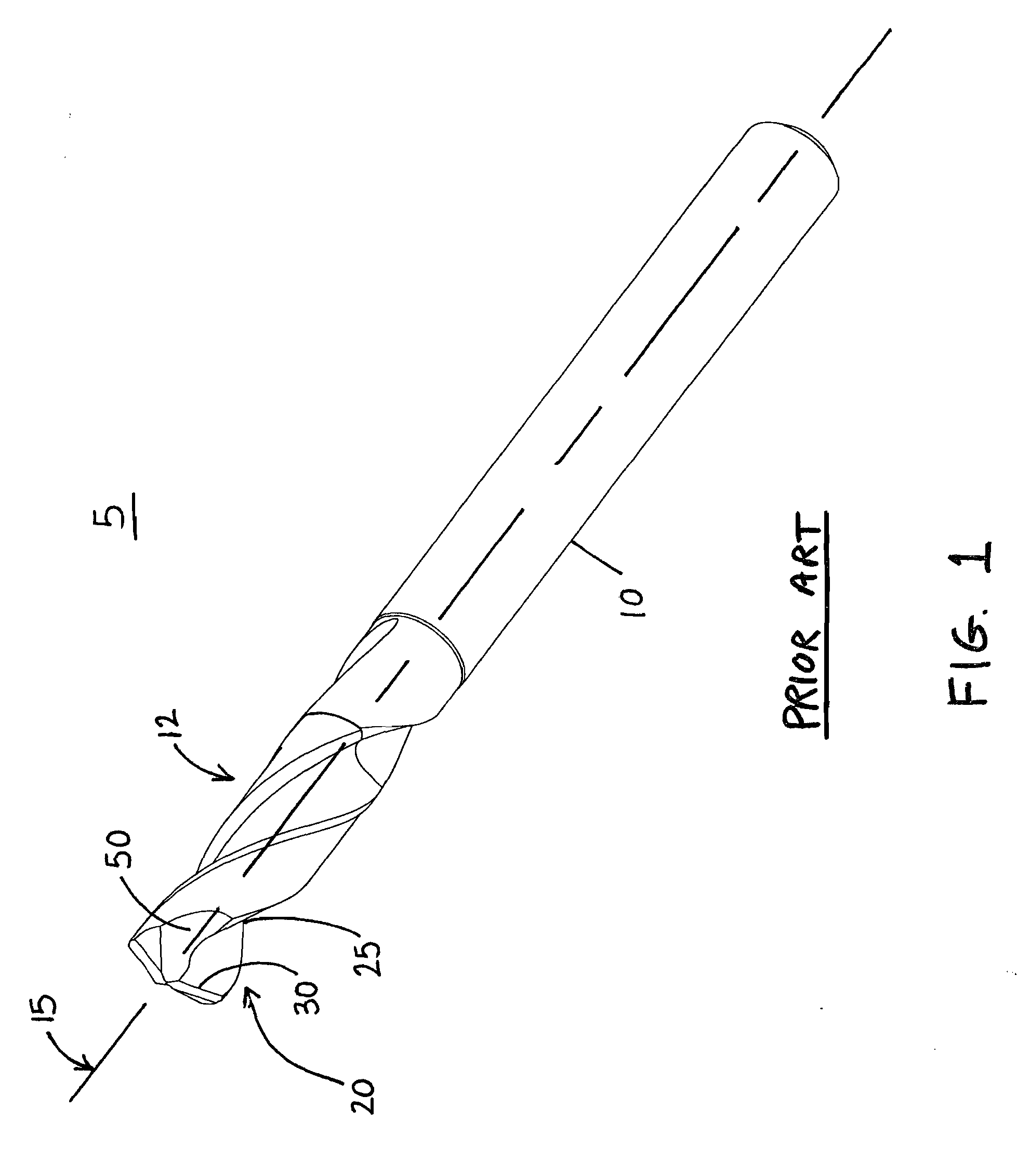Twist Drill With Negative Axial Rake Transition Between The Lip And The Secondary Cutting Edge
a technology of axial rake and secondary cutting edge, which is applied in the field of twist drill, can solve the problems of thermal degradation of the surface of the drill point, cutting operation,
- Summary
- Abstract
- Description
- Claims
- Application Information
AI Technical Summary
Benefits of technology
Problems solved by technology
Method used
Image
Examples
Embodiment Construction
[0020]FIGS. 4 and 5 illustrate a perspective view of a drill in accordance with the subject invention while FIG. 6 illustrates an end view of that same drill.
[0021]In particular, FIGS. 4-6 illustrate a drill 105 for making a hole within a workpiece. The drill 105 has a body 110 extending along a longitudinal axis 115. At least one flute 120 extends along the body 110. However, the subject invention is applicable to drills with up to four flutes. Just as before, for clarity, only the cutting edges associated with one flute will be discussed with the understanding that the cutting edges associated with the opposing flute are symmetric. In particular, end segment 130 (FIG. 6) is defined by the area above line 129 and to the right of the first primary cutting edge 145, the secondary cutting edge 150 and the tertiary cutting edge 155. As can be seen, another end segment 130a exists above line 129 and to the left of the cutting edges but will not be discussed with the understanding that t...
PUM
| Property | Measurement | Unit |
|---|---|---|
| axial rake angle | aaaaa | aaaaa |
| axial rake angle | aaaaa | aaaaa |
| axial rake angle | aaaaa | aaaaa |
Abstract
Description
Claims
Application Information
 Login to View More
Login to View More - R&D
- Intellectual Property
- Life Sciences
- Materials
- Tech Scout
- Unparalleled Data Quality
- Higher Quality Content
- 60% Fewer Hallucinations
Browse by: Latest US Patents, China's latest patents, Technical Efficacy Thesaurus, Application Domain, Technology Topic, Popular Technical Reports.
© 2025 PatSnap. All rights reserved.Legal|Privacy policy|Modern Slavery Act Transparency Statement|Sitemap|About US| Contact US: help@patsnap.com



